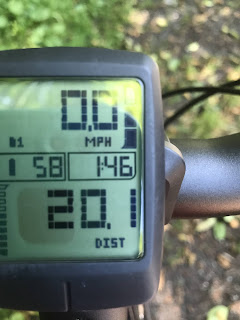Welcome to my introduction of the Olympic National Park. Facts first - Olympic National Park is located on the Olympic Peninsula in Washington State. Originally designated as Mount Olympus National Monument in 1909 by President Theordore Roosevelt, it was re-designated as Olympic National Park in 1938 by President Franklin Roosevelt. ONP has four distinct regions within its boundaries; Pacific Coastline, alpine areas, west-side temperate rainforest, and drier east-side forests. It also has three ecosystems - subalpine forest and wildflower meadows, temperate forest, and rugged Pacific coastline. ONP is an international Biosphere Reserve, as well as a UNESCO World Heritage Site, and 95 percent of the park’s 3,245,806 acres are designated as the Olympic Wilderness. (Thanks to Wikipedia for these facts!)
My introduction to ONP came in the summer of 1972, when I took a summer job at the Sol Duc Hot Springs Resort. I didn’t even look at a map until I was in the bus station in Seattle, and I was a little taken aback to see that the road basically ended just past the resort! This job changed my life - I met my future husband, and have lived on the Olympic Peninsula since 1974. My knowledge of the Park took another leap in 1979, when a fellow teacher organized a trip with students to explore ONP. He was a former backcountry ranger, and I went along as a chaperone. We spent the first week exploring different areas of the Park, and the second week we went on a backpacking trip to Mount Olympus, the crown jewel of ONP. I had never backpacked before, and had no idea that this trip was in the Epic category of hikes. Although I didn’t summit (I couldn’t bring myself to rope up and get belayed up), I can say I have been on the Blue Glacier, and everytime I see Mount Olympus from Hurricane Ridge, I still can’t believe I’ve been there.
Most Park visitors won’t experience ONP in this manner, but many will make the 17-mile drive to Hurricane Ridge, with it’s views of the Olympic Mountains, as well as the Strait of Juan de Fuca, the San Juan Islands, and Canada to the north. Hurricane Ridge is a very popular spot, and parking is limited at the Ridge, so visitors may experience waits. It’s worth the drive, though, and I’ve even ridden up there on our tandem. The lodge is rustic, and there are park rangers who lead nature walks, as well as snowshoe walks in the winter. There is a small ski area with a couple of rope tows, and a poma lift. Hurricane Ridge, with an annual snowfall of 400-plus inches, definitely can live up to its name with high winds and blizzard conditions.
Lake Crescent is another spot to visit. The second deepest lake in Washington state, this is beautiful to drive around, and the Lake Crescent Lodge, which dates back to 1916, is lovely. A gift shop, restaurant, and beach access are available to visitors, who can walk under the highway and visit Marymere Falls, or for the hardy, take the trail up to Storm King, with views of Lake Crescent, Lake Sutherland, and the Strait of Juan de Fuca. After leaving Lake Crescent, head west to visit Sol Duc Hot Springs, with the mineral-spring pools, as well as a fresh-water pool. Sol Duc Falls is two miles away and a short walk up the road, and not to be missed.
I love the coastal area of Olympic National Park. There are several access points for beach lovers, and my favorites are Kalaloch and Ruby Beach, with its sea stacks. Mora and Rialto Beach, and the boardwalk hike from Lake Ozette to the ocean are great ways to experience the Park. For forest lovers, visit the Hoh Rain Forest, where rainfall is measured in feet, anywhere between twelve and fourteen feet annually.
Visitors who want to experience the variety that is Olympic National Park will do a lot of driving, but it’s worth it. For the backpacker, Wilderness Camping Permits are required, but there are still plenty of day hikes where visitors can still experience ONP from beyond a paved trail. I’m lucky to have this beautiful Park in my backyard!



























